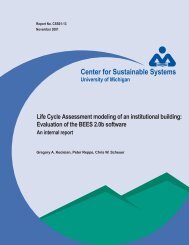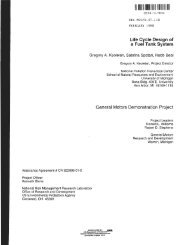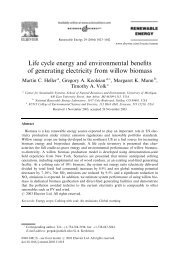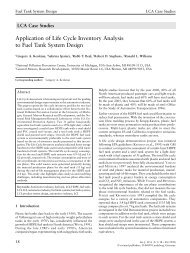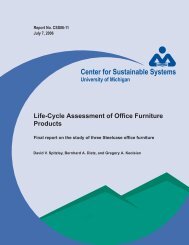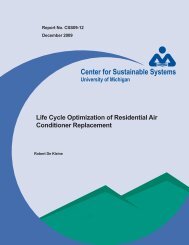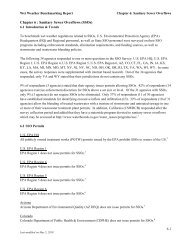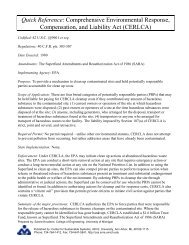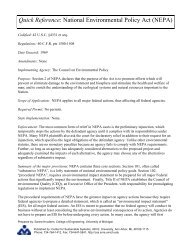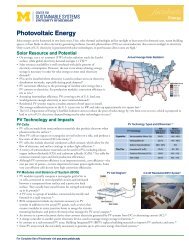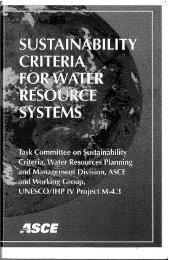A Life Cycle Assessment of the PureCell Stationary Fuel Cell System ...
A Life Cycle Assessment of the PureCell Stationary Fuel Cell System ...
A Life Cycle Assessment of the PureCell Stationary Fuel Cell System ...
- No tags were found...
You also want an ePaper? Increase the reach of your titles
YUMPU automatically turns print PDFs into web optimized ePapers that Google loves.
manufacturing phase and a high negative environmental impact in <strong>the</strong> end-<strong>of</strong>-life phase<br />
because <strong>of</strong> platinum recycling. It does however not represent <strong>the</strong> platinum cycle for <strong>the</strong><br />
<strong>Pure<strong>Cell</strong></strong> system correctly. UTC Power aims to recollect <strong>the</strong> CSA’s and extract <strong>the</strong><br />
platinum for reuse, resulting in a UTC Power internal recycling process. A schematic <strong>of</strong><br />
this ‘internal lease’ cycle is shown in Figure 4-3.<br />
Figure 4-3: UTC Power platinum internal recycling<br />
Thus, 2% <strong>of</strong> <strong>the</strong> platinum input into <strong>the</strong> CSA manufacturing process was raw platinum<br />
and 98% was recycled. Recycled platinum was modeled in SimaPro with LCI data from<br />
[13].<br />
Teflon®<br />
LCI data for <strong>the</strong> production <strong>of</strong> Teflon® could not be found. Polyethylene (PE granulate<br />
average B250 <strong>Pure<strong>Cell</strong></strong> system) was used in <strong>the</strong> LCA model instead. An investigation<br />
by <strong>the</strong> United States EPA is running regarding <strong>the</strong> chemical PFOA (perfluorooctanoic<br />
acid) [14], which is both used and emitted in <strong>the</strong> production process <strong>of</strong> Teflon®. PFOA<br />
is very persistent in <strong>the</strong> environment, and is shown to cause developmental and o<strong>the</strong>r<br />
adverse effects in laboratory animals. Recognizing <strong>the</strong> fact that a significant amount <strong>of</strong><br />
Teflon® is used (467.7 lb), one must realize that substituting Teflon® with polyethylene<br />
probably leads to an underestimation <strong>of</strong> <strong>the</strong> modeled environmental impact <strong>of</strong> Teflon®.<br />
Graphite<br />
LCI data for modeling <strong>the</strong> graphite production process was obtained by EIO-LCA<br />
(Economic Input-Output LCA) [15] because no process for graphite was included in <strong>the</strong><br />
SimaPro databases and no o<strong>the</strong>r literature containing LCI data on graphite production<br />
could be found. With this method LCI data are calculated based on a product category<br />
and <strong>the</strong> cost in dollar value to make <strong>the</strong> output. For graphite, <strong>the</strong> category ‘Carbon and<br />
graphite product manufacturing’ was selected with a product value <strong>of</strong> $6,924 (UTC<br />
27



